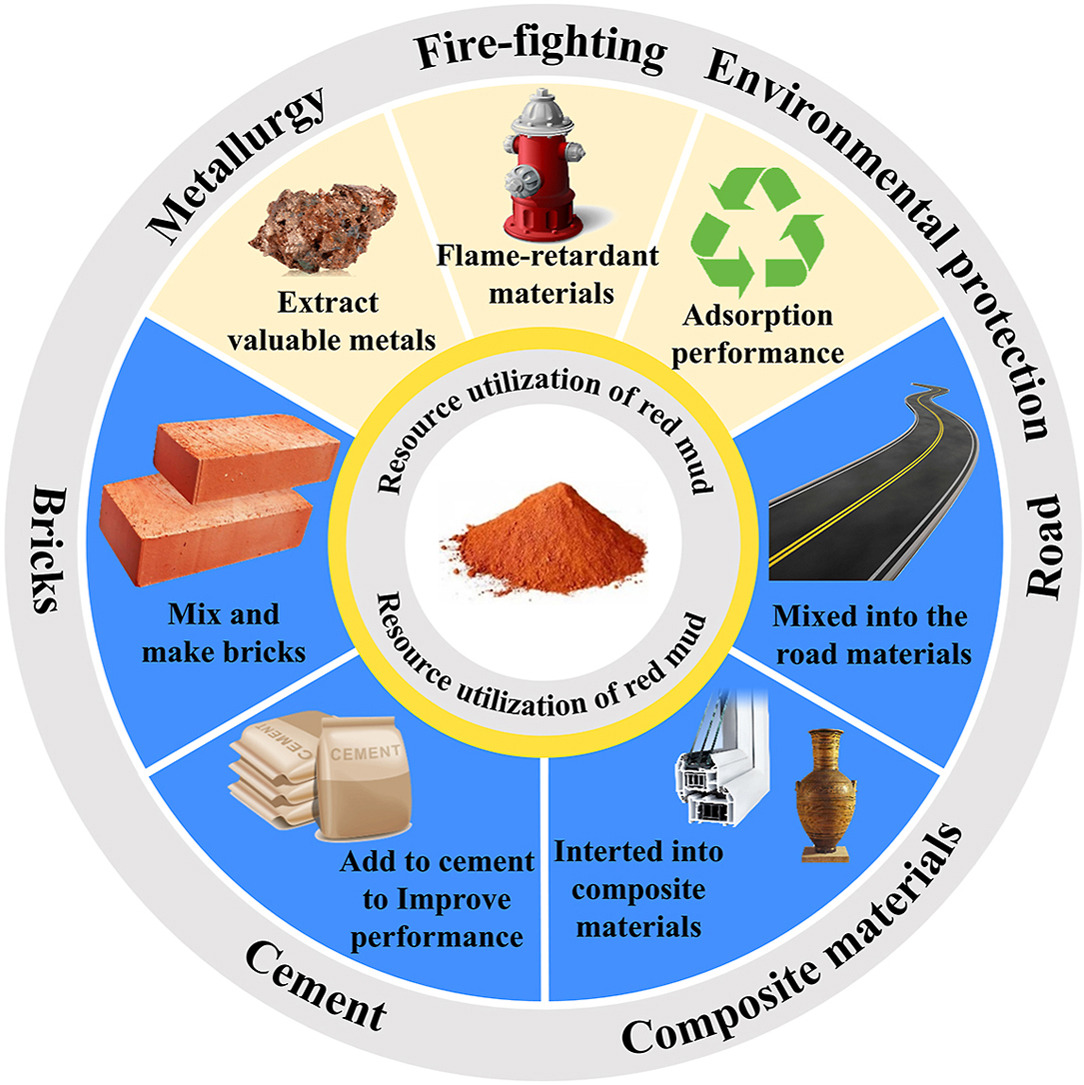• Reviewed red mud applications in cement,road,brick,and composite materials.
• Proposed a framework linking red mud structure,performance,and carbon reduction.
• Explored synergy of red mud with other wastes for performance and carbon reduction.
• Discussed red mud-based composites and ML optimization as future research directions.
Red mud, a highly alkaline industrial solid waste generated during the production of alumina, is characterized by its fine particle size and residual heavy metals. Its massive accumulation poses a serious threat to the environment and ecosystems. This paper provided a systematic review of the current research on red mud in building materials and its potential for carbon reduction. It examined the physicochemical properties of red mud and its applications in cement-based materials, road construction, building blocks, ceramics, and composite materials. Researches indicated that utilizing red mud in building materials could significantly increase its utilization while simultaneously reducing carbon emissions during production. For instance, red mud can be employed in the production of low-clinker composite cement, used to improve the water damage resistance of asphalt mixtures, and integrated to enhance the mechanical properties and durability of unfired bricks and ceramic products. Moreover, its carbon sequestration capacity offered substantial support for developing carbon-reducing building materials. Nonetheless, the large-scale application of red mud remains constrained by critical technical challenges, including high pre-treatment costs, limited performance optimization, and insufficient environmental safety assessments. This paper outlined future research directions and proposes strategies to promote the extensive utilization of red mud for carbon reduction, thereby providing a theoretical framework and technical support for the green transformation of the aluminum industry.

